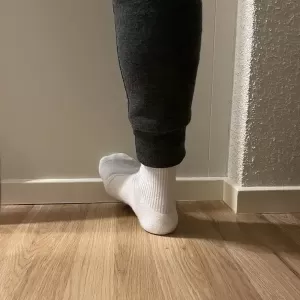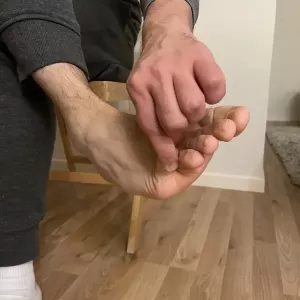How To Stretch Abductor Digiti Minimi (Foot) For Flexibility And Pain Relief
Abductor digiti minimi pedis (foot) is a muscle located in your foot, originating from your heel (calcaneus bone) and going all the way forward to your little toe (proximal phalanx part).
The function of this muscle is to move the little toe away from the midline (abduction) as well as to help flex your little toe.
Stretches For Abductor Digiti Minimi Muscle
To stretch the abductor digiti minimi muscle, you’ll want to perform movements that are opposite to its typical actions, such as extension and adduction of the fifth toe.
Here are a few ways you can stretch this muscle:
1.Standing Wall Stretch
Stand by the wall. Rotate your leg inward and place your toes on the wall. Lean forward with your body to increase the intensity of the stretch. Hold for 30s.
2. Seated Abductor Digiti Minimi Stretch
To stretch the abductor digiti minimi muscle all by yourself, sit in a chair with your legs crossed and use your fingers to gently grasp your little toe.
Gently pull your little toe into extension and towards the midline of your body (adduction). Hold for 30 seconds.
How to Find Abductor Digiti Minimi Muscle
Start by locating the fifth metatarsal bone, which is the long bone on the outside of your foot. This muscle passes along the fifth metatarsal bone, on the outer side.
When palpating, curl your toes or spread your toes and you will feel a muscle contracting in this area.
This is the Abductor Digiti Minimi muscle in your foot.
Explore other topics on stretching collection page.
Learn more about stretching exercises and routines by reading one of the best books on stretching and flexibility. Increase your flexibility faster with best stretching equipment for home use.


